
All categories
Featured selections
Trade Assurance
Buyer Central
Help Center
Get the app
Become a supplier

(11771 products available)






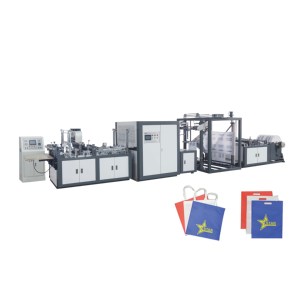






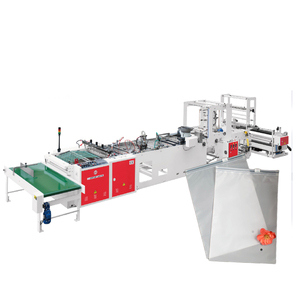


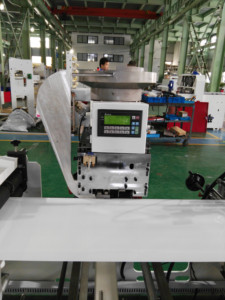

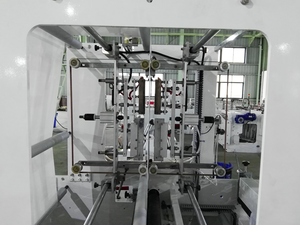


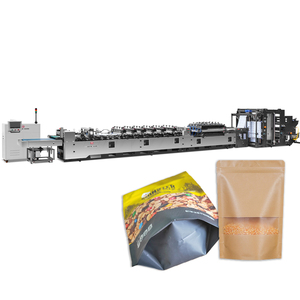

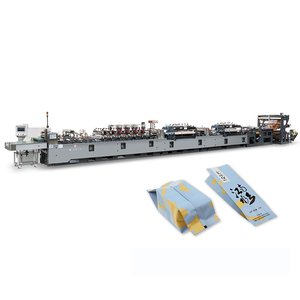
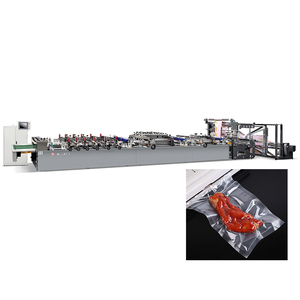


The side sealing bag making machine comes in various types, each with its features and benefits. Some of the more popular types are detailed below:
flexible film material machine:
This works on all kinds of bag shapes, such as t-shirt bags, punch-out bags, goose-neck bags, drawstring bags, flags, and many more. Generally, it is more economical to purchase the entire unit to film, print, and make the bag in one machine, but some smaller companies and universities can opt for just this portion of the entire bag-making process.
side sealing medical bag-making machine:
These machines produce medical bags used in healthcare settings to contain and transport medical supplies, equipment, or specimens. Side-seal medical bag-making machines can incorporate features like antimicrobial materials, biohazard labeling, and secure sealing mechanisms to ensure the safety and integrity of medical bags.
bottom seal side bag-making machine:
A bottom seal side bag-making machine is used to manufacture bags with side seals and a sealed bottom. These bags are typically made from roll stock plastic and are commonly used for packaging purposes. The machine functions by first feeding the roll stock material into the machine, which is then flattened andাড় cut to the desired bag size. The next step involves sealing the bottom of the bag, followed by sealing the sides, which gives the bag its final shape and structure.
laminated side sealing bag-making machine:
Laminated side sealing bags are frequently used to protect important documents. To avoid using expensive materials like plastics, a laminated paper option can be used. The creation of these bags in bulk is made easier by laminated side sealing bag-making devices. The laminated material is seamed at the corners on either side to form a pocket, which is then utilized to cover crucial papers, tickets, and other items that require some level of safeguarding.
automatic side sealing bag-making machine with an inline punch:
These machines are more efficient than others since they include an inline forgoing system that eliminates the need for operators to feed the material into the heating element. Inline feeding, cutting, and sealing are all done automatically. The punch is also included in this machine set-up. It perforates any desired bag pattern and is more economical, as one machine replaces several smaller machines required to do individual jobs.
Max Bag Width
This is the greatest width of the bag that the machine can produce. The maximum bag width for side sealing bag-making machines is typically 400 mm to 2000 mm.
Max Bag Length
The maximum length is determined by the size of the raw materials and the machine's configuration. The maximum bag length can vary depending on the model and may range from 300 mm to 1200 mm.
Raw Material
A side-sealing bag-making machine can make bags out of a variety of materials, including PE, PP, PVC, TPO, TPLO, nylon, plastic, etc. The machine's ability to use various materials depends on its design and the extrusion die it employs.
Sealing Method
The side-sealing bag-making machine employs several sealing techniques, including hot melt glue sealing, line sealing, hot thread sealing, etc. Different sealing techniques result in varying levels of sealing strength and effects.
Power Supply
Power Requirements of the Machine, including Voltage and Current. It is usually 220V/50Hz, single phase, or custom.
Weight
The weight of the machine is determined by its size and structure. For most machines, the total weight might vary from 2000 kg to 5000 kg.
Production Speed
The production speed of the machine is determined by the bag-making process and the machine's speed. For most machines, the production speed might vary from 40 to 100 pieces per minute.
Keep it clean:
A method for cleaning the machine's surfaces and components is to use a soft, moist cloth. Using corrosive chemicals or scrub brushes that could scratch the surface is not allowable. Before cleaning, make sure the machine is switched off and disconnected from the power supply.
Lubrication:
To prevent rapid component wear from the lack of lubricant, apply suitable lubricating oil to the moving parts, such as bearings and guide rails. Use the lubricating oil suggested in the user manual, and regularly monitor the oil's state and level.
Adjust the tension:
Adjust the tension of the sealing parts to ensure that the sealing force is adequate and the bags are sealed tightly and effectively. The tension might need further adjustments according to the thickness and material of the bag-making paper.
Safety inspection:
Inspection of safety elements, such as emergency stops, safety guards, etc., to ensure their correct and functional states. The user should promptly repair or replace them if inconvenienced or damaged, to ensure the user's and others' safety during operation.
Pay attention to the environment:
By staying away from places with too high or too low temperatures, too damp or dusty areas, and electrically dangerous environments, the machine may be kept in an ideal environment for operation and use.
Applications of side sealing bag making machines
These machines can produce a variety of side seal bags for different markets. Here are some of the applications of side sealing bag making machines.
Food packaging industry
Side sealing bag making machines produce side seal bags used for packing different types of food. Meanwhile, side sealing bags are suitable for both solid and liquid food. Also, they are hot, cold, and moisture-resistant because of the heat-resistant sealing. Thus, side seal bags can be used for microwave, freezer, and oven-safe foods. Aside from this, side sealing bags are acceptable for packing non-food items linked to the food sector, like kitchen supplies and pet food.
Retail and e-commerce
In stores, side seal bags are used to pack and seal products from diverse sectors, such as cosmetics, toys, electronics, and clothing. Also, the bags can be branded with custom prints, which make them ideal for product promotion and brand visibility. Besides that, side bags with zippers or slider locks are widely used in the packaging and delivery of online merchandise, mainly side seal bags with handles for the shopping of small and medium-sized goods.
Construction and hardware
After producing side seal bags of different shapes and sizes, they are usually sealed with strong side seams. Because of this, side seal bags are ideal for heavy-duty items. They are widely used in the packaging and transportation of hardware, hand tools, construction materials, and mechanical components.
Pharmaceuticals and personal care
Pharmaceuticals are packed in side seal bags that are precision-made with leak-proof seams, strong seal lines, and no air pockets. In the same way, moisturizers, shampoos, and other beauty items are packed in side seal bags with spill-proof and secure seals.
Textile and leather
In the textile and leather industry, large textile rolls or leather sheets are wrapped in side seal bags to keep them dust-free and protected from damage.
When choosing a side sealing bag-making machine, several factors need to be considered to ensure the ideal packaging.
Producible Bag Type Requirements:
Different machines specialize in producing specific types of bags. For instance, the side sealing T-shirt bag-making machine is designed to manufacture T-shirt bags with distinctive cut shapes. On the other hand, the side sealing patch bag-making machine may incorporate additional features such as adding static or optical patches to the bags. Therefore, selecting the right machine based on the required bag type is crucial to meeting particular packaging needs.
Production Speed and Efficiency:
Production speed and efficiency are vital considerations in any manufacturing process. When selecting a side-sealing bag-making machine, it is crucial to consider the anticipated production volume and required speed. Different machines offer varying speeds, so it is essential to choose a machine that aligns with production requirements to ensure timely bag production.
Machine Size and Footprint:
Due to limited space, the size and footprint of a machine are crucial factors when selecting a side-seal bag-making machine. It is vital to ensure that the machine will fit within the available production area. Moreover, the size of the machine may influence production efficiency and workflow, so it is essential to ensure that the size corresponds with the facility's needs.
Operator Training and Support:
When choosing a side-seal bag-making machine, it is crucial to consider the availability of operator training and support. As the production process becomes more automated, understanding how to operate and maintain the machine properly becomes important. It is essential to ensure that suppliers provide adequate training and ongoing support for the equipment.
Q1: Which type of sealing is most common in side seal bag making machines?
A1: Heat sealing is the most common method used in side seal bag-making machines. It involves using heated sealing bars or wires to melt and fuse the bag's material, creating a seal.
Q2: Are side sealing bag-making machines compatible with all types of films?
A2: No, side sealing bag-making machines are not compatible with all types of films. They work best with certain films, such as polyethylene, polypropylene, and laminated films. Using any incompatible material can produce subpar results or damage the machine.
Q3: What are the main advantages of using side sealing bag-making machines?
A3: The benefits of using side sealing bag-making machines are efficiency, versatility, consistent sealing strength, and cost-effectiveness.
Q4: Can users adjust the sealing strength and height of side sealing bag-making machines?
A4: Yes, users can adjust the sealing strength and height of most side-sealing bag-making machines to accommodate different materials and bag requirements. This is essential for achieving the desired seal quality and adapting to various applications.